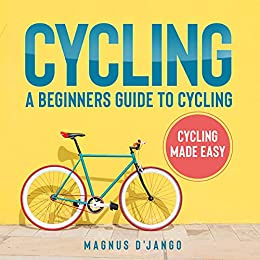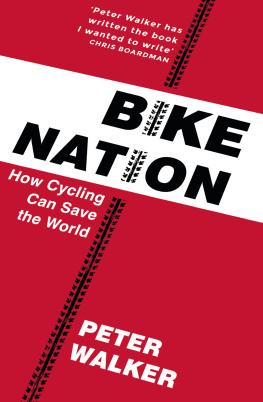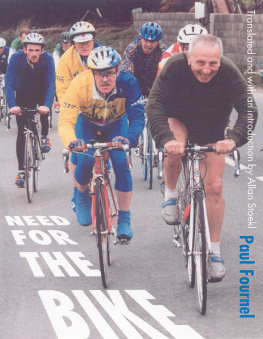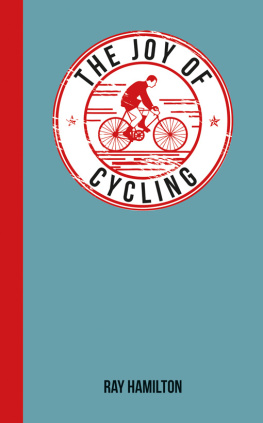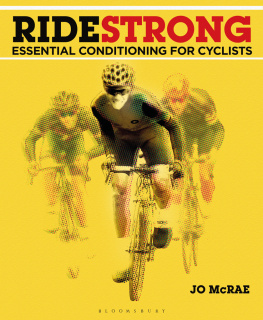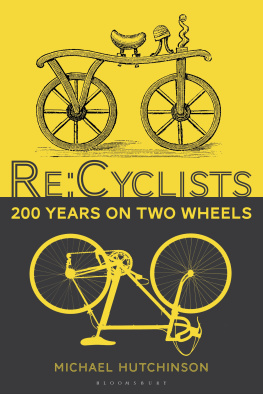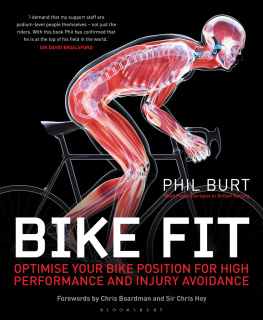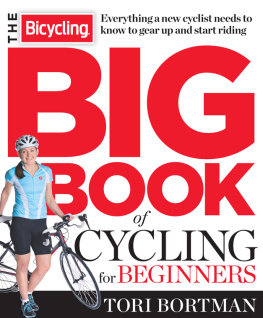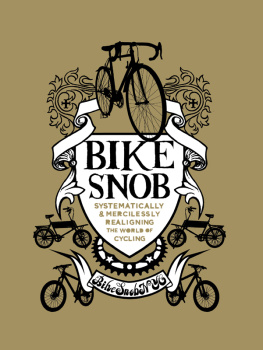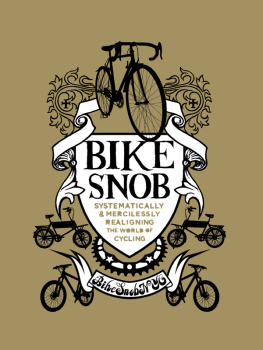Cycling
A Beginners Guide to Cycling
Copyright 2021 - All rights reserved.
The content contained within this book may not be reproduced, duplicated or transmitted without direct written permission from the author or the publisher.
Under no circumstances will any blame or legal responsibility be held against the publisher, or author, for any damages, reparation, or monetary loss due to the information contained within this book, either directly or indirectly.
Legal Notice:
This book is copyright protected. It is only for personal use. You cannot amend, distribute, sell, use, quote or paraphrase any part, or the content within this book, without the consent of the author or publisher.
Disclaimer Notice:
Please note the information contained within this document is for educational and entertainment purposes only. All effort has been executed to present accurate, up to date, reliable, complete information. No warranties of any kind are declared or implied. Readers acknowledge that the author is not engaged in the rendering of legal, financial, medical or professional advice. The content within this book has been derived from various sources. Please consult a licensed professional before attempting any techniques outlined in this book.
By reading this document, the reader agrees that under no circumstances is the author responsible for any losses, direct or indirect, that are incurred as a result of the use of the information contained within this document, including, but not limited to, errors, omissions, or inaccuracies.
Table of Contents
Introduction
There is a lot to be said about the sudden upsurge of cyclists on the road. The popularity of biking seems to have increased tremendously during the COVID-19 pandemic and for good reason. When people are limited to outdoor entertainment, cycling is a great way to have fun, get some exercise, and socialize while staying six feet apart.
If youve been thinking about getting into cycling then this guide is for you. Before we get into the nitty-gritty, we can talk a bit about cycling culture.
European vs. American Cycling Culture
In Europe, cycling is very much a part of everyday life. When you look at the Netherlands, for example, almost everyone uses a bike daily. In the book, Building the Cycling City , the authors discuss how Amsterdam was built for bikes and ways in which they have accommodated cyclists.
In America, however, the roads have been made for cars, and bikes were thought of much later. Though there are more and more places that have dedicated bike lanes, it can be dangerous to ride in many places as cyclists have to be very aware of the cars around them.
So depending on where you are, cycling might be very different. Make sure to take precautions when beginning the sport as it is always important to follow the rules of the road.
Pleasure vs. Training
There is also a huge difference between those who ride for pleasure and those who are training for a race. There are plenty of amateur bike races and it is important to know what you are getting into before you decide to take out your cycle.
Those who want to train for a race might want to look into things such as Carb Cycling and Subliminal Cycling. Carb cycling actually has nothing to do with bicycles but is a useful tip for any athlete. How it works is that the athlete will have a strict diet plan that alternates high carb diets and low carb diets.
Subliminal Cycling, on the other hand, is when the athlete spends time visualizing the race before the actual race day. This helps athletes mentally prepare for the race and has been used successfully by many road racers.
So, if you are chatting with a bunch of cyclists and they use these terms, you know they are training for races. And if you are looking to just have fun, then they might be a bit too intense.
Beginners
This guide is truly for beginners. Please read the information carefully and take note of the different tips. We hope you enjoy the book and enjoy the ride!
Chapter 1: Cycling For Beginners
Top Tips For Beginner Cyclists
- Buy your bike at a local shop. You want to make sure you know the people at your local bike shop as they will be valuable resources when you have questions. They will be able to help you find the best bike for your budget and needs.
- Get a proper fitting. Once youve figured out which bike to buy, make sure that you spend the time getting to know what settings are best for your body.
- Learn how to fix a punctured wheel. If you plan on cycling, it can be good to know how to quickly fix a puncture as it can happen at any time or anywhere, meaning you could be stranded if you cannot fix a wheel on the go.
- Learn how to do regular maintenance on your bike. This is a huge money saver. If you know how to do basic maintenance then you will save a lot of money on keeping your bike on the road.
- Join a riding club. This will be good for your social life and will allow you to find some other cyclists that you can go on long rides with. They also can be a great sounding board when questions about your bike or cycling come to mind.
- Practice some basic techniques so that you feel comfortable on any type of road. Get to know how your bike responds when feathering the brakes and start off easy when going around corners. Eventually, you will know the limits of you and your bike, but starting off slow will avoid accidents.
- Bring plenty of snacks and water for the ride. This will allow you to go further without losing energy and be less exhausted in the end.
- Dont do too much at the beginning. Just like any new physical activity, your body needs to adjust to the sport before you have the endurance to go on really long rides.
Chapter 2: Cycling Fitness
The following are the fitness benefits of cycling:
Great for weight loss. You burn a lot of calories when biking, so it can be easy to lose weight.
Cardio workout. Cycling is a wonderful workout for your heart as it gets your heart rate up with minimum effort.
Muscle building. Riding works your legs, arms, and back, meaning you get a full-body workout just by going for a cycle.
Chapter 3: Cycling Weekly
Try to go cycling every week when you are starting out. This way you can get used to your bike slowly which will allow you to avoid accidents once you have graduated to longer rides. This will also allow you to gain endurance slowly so that your body has more than enough time to recover between rides. You do not want to go too long without riding at the beginning as it is easier to build on your skills if you practice weekly.
Chapter 4: Cycling for Women
Though cycling itself does not change when you are a woman, some of the benefits of cycling can be advantageous for females. With wider hips, women tend to have a body shape that is advantageous to cycling. It is also a great exercise for mothers, as it will tighten your pelvic floor without having to do a million crunches.
Chapter 5: Cycling Gear
The essential cycling gear is as follows:
Helmet. Getting a well-fitted helmet is essential to riding safely. Make sure the helmet is snug, but not too tight.
Lock. You need this if you plan on leaving your bike anywhere.
Bike Lights. You want lights so that you can be seen by cars at all times
Gloves. When the weather gets cold, your hands need protection.
Comfortable Seat. Make sure your saddle is very comfortable. This will be essential for long rides.
Chapter 6: Cycling Hills

